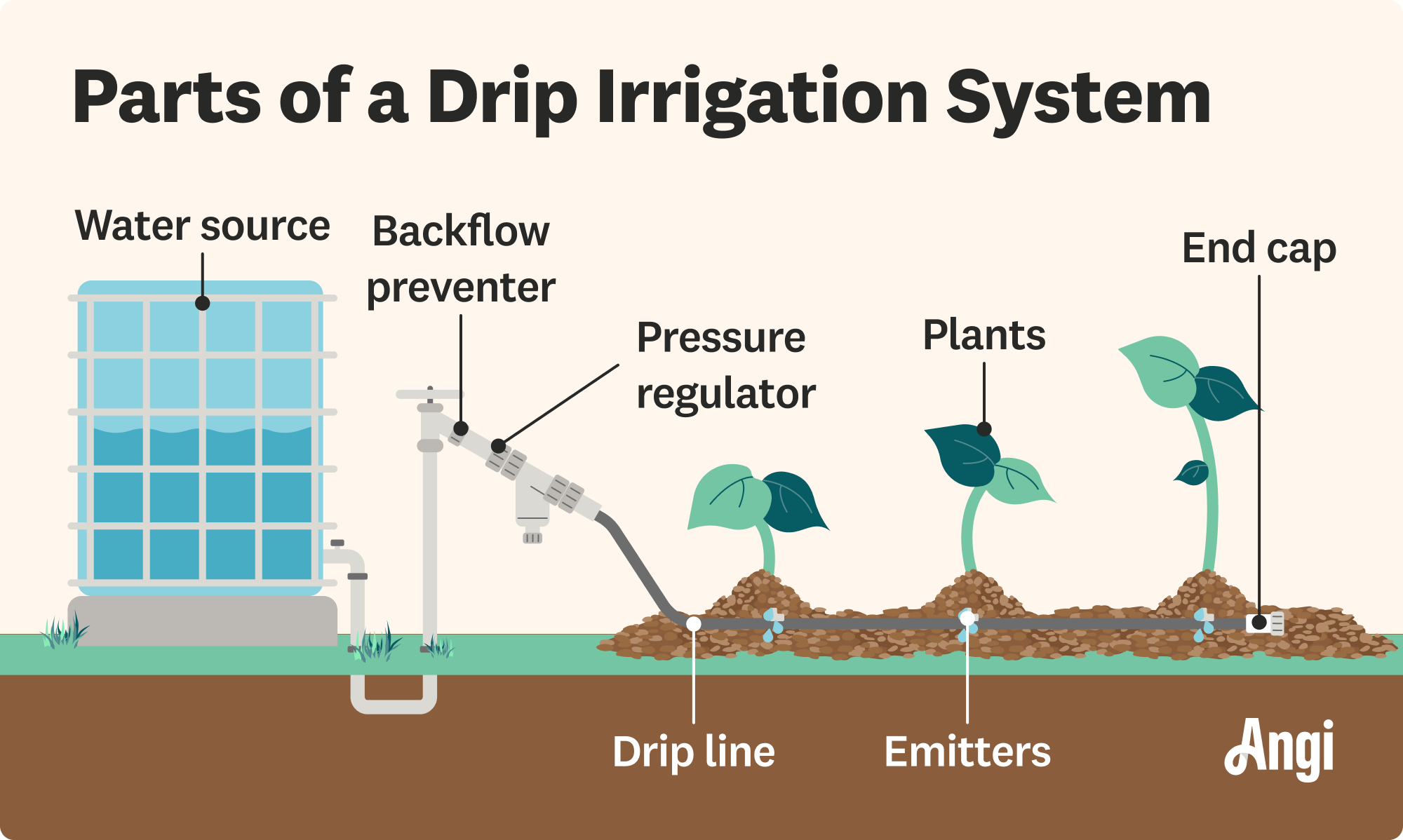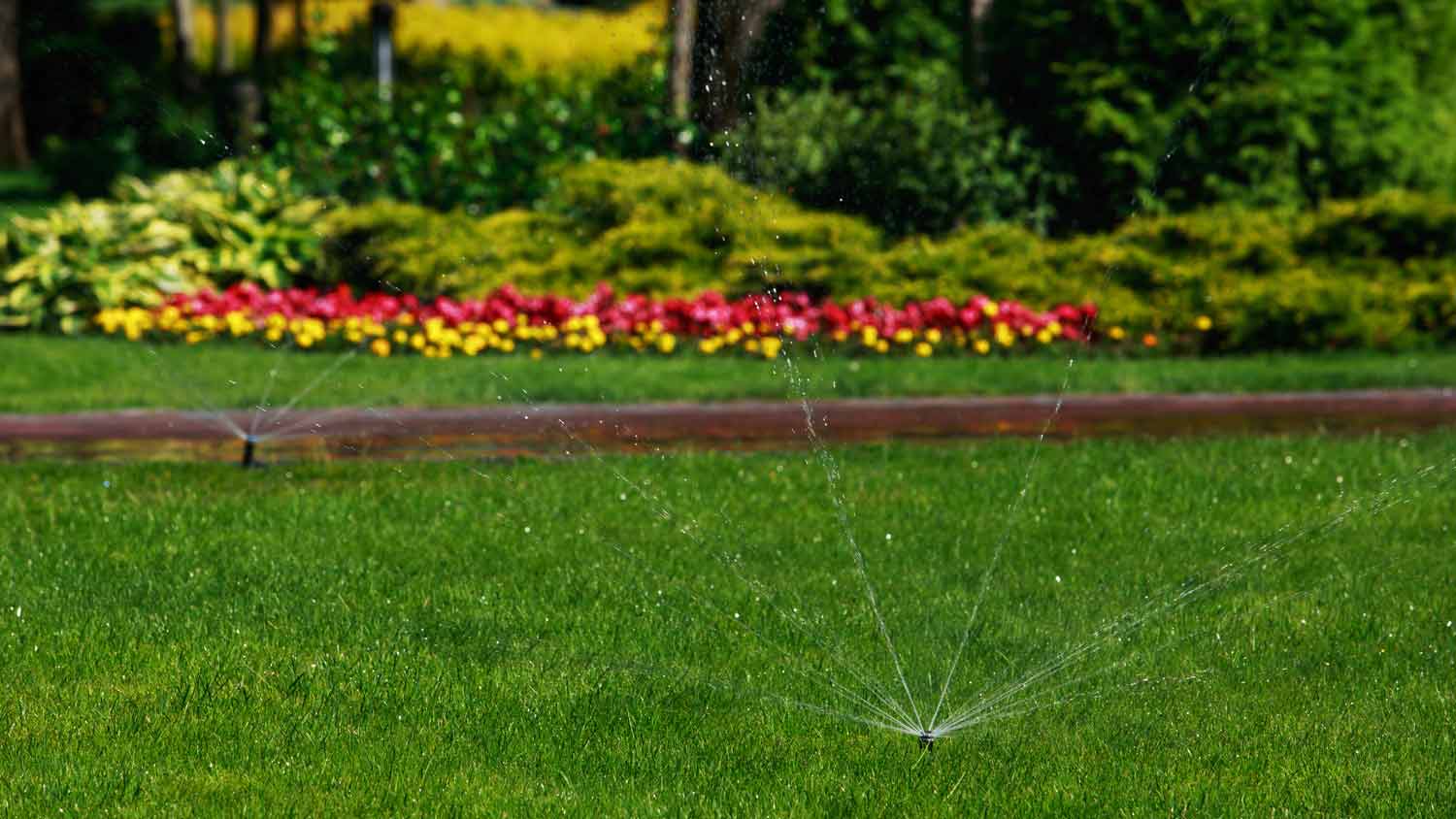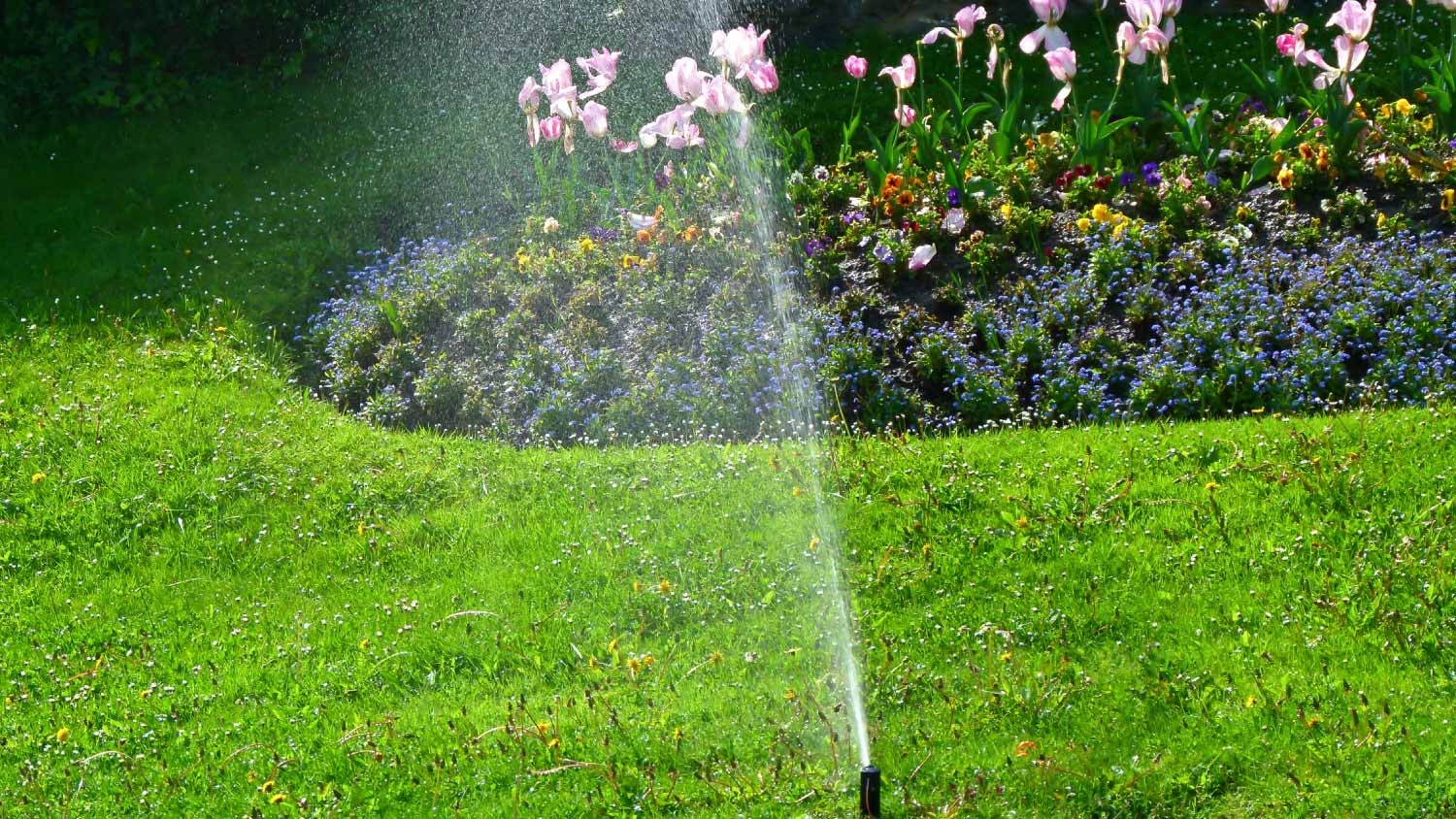Drip Irrigation Pros and Cons: What to Consider
If mist is a must, learn the pros and cons of a drip irrigation system


Most residential drip irrigation systems will cost between $200 and $850.
Drip irrigation systems use 80% less water than traditional methods.
Automatic timers and sensors save you time watering plants.
Irrigation systems can be costly and complicated to install.
Tired of watering your lawn with a bulky hose and leaky sprinkler head? It’s time to consider the pros and cons of a drip irrigation system. Drip irrigation systems deliver consistent water to your plant's roots while saving you time and water. So, what’s the catch? Drip irrigation pros and cons abound, so read more about them before you start installing your sprinkler system.
What Is Drip Irrigation?

Drip irrigation is a mechanical system installed in a yard or garden attached to a water source. You can manually control the system or set it on a timer to disperse water across a yard evenly. Generally, irrigation systems use a series of tubes to carry water to garden beds or zones, where it slowly drips out and waters your plants. Unlike a garden hose or sprinkler, drip irrigation systems water plants more efficiently and can be done automatically. Consult a local sprinkler installer to discuss plans to add a drip irrigation system to your outdoor space.
Drip Irrigation Pros and Cons
Drip irrigation may be a great choice for some people, but not the right option for others. Review the pros and cons of drip irrigation in our chart for a basic overview, and read more about each benefit and drawback of using drip irrigation below.
| Pros | Cons |
|---|---|
| Saves water | Expensive to install |
| Time-saving | Complicated to install |
| More control over water use | Needs to be maintained |
| Reduces erosion and disease | Damaged by fertilizer and elements |
Drip Irrigation Pros

Regardless of the type of drip irrigation you choose, you can expect the following benefits after installing a system.
1. Saving Water
Drip irrigation systems save significant water compared to a traditional garden hose or sprinkler. A study out of the University of Massachusetts Amherst determined that, at its highest efficiency, a drip irrigation system can save a home 80% of its water usage, usually reserved for gardening.
Irrigation systems deliver water more efficiently to beds, so they’ll use less water overall. Not only is this a way to conserve water usage, but it also means cutting down on monthly water bills.
2. Saving Time
Many irrigation systems can run on timers, meaning you don’t have to be home to water your lawn or garden. But even simple systems will save you time. Instead of pulling a hose around the lawn, you just have to turn on the water flow to the irrigation system. Your beds will get watered faster, and you don’t have to lug heavy watering equipment across the yard.
3. More Control Over Water Flow
Since drip irrigation systems sit close to the root, you get a controlled water flow directly to the plant, cutting down on water waste. Similarly, many drip irrigation systems are highly customizable, meaning you can cut off water to certain overwatered zones, controlling which beds get water and when.
Depending on the complexity of your system, the hoses may even have sensors that can read moisture levels, automatically turning on when a plant needs water.
4. Prevents Erosion and Disease
Drip irrigation systems are low, controlled watering, especially compared to garden hoses, which tend to deliver high pressure to the plants and the beds. Over time, the high water pressure from a hose can erode garden beds, washing away important nutrients in the soil. This means you’ll likely have to mulch and treat your beds more frequently.
Similarly, watering with a garden hose results in wet leaves on plants, which can lead to fungus or disease. Since drip irrigation goes straight to the root, you don’t have to worry as much about disease or fungus on the leaves.
Drip Irrigation Cons
Drip irrigation can be a relief for many gardeners, but the systems do come with their fair share of cons.
1. Expensive Installation
Drip irrigation is markedly more expensive than a run-of-the-mill garden hose. Most home drip irrigation systems cost between $200 and $850 to install but could cost as much as $4,000 depending on the size of the yard and complexity of the system. For small-scale or hobbyist gardeners, installing a drip irrigation system might be too pricey.
2. Complicated Installation
Depending on the complexity of your yard, you could run into a few challenges if you choose to DIY your drip irrigation system. A large property, atypical bed shapes, or a sloped yard could influence the system you choose to install, the equipment's cost, and the installation process. The more complex the yard, the more factors like water flow and pressure could be impacted long-term.
Some gardeners might opt for a professional installation or will have to slog through a complex installation process.
3. Ongoing Maintenance
On a day-to-day basis, your drip irrigation system is largely “set it and forget it.” However, if you forget basic maintenance tasks for the system long-term, you’ll likely have to replace it sooner or encounter complex repairs of one or more components.
You’ll want to regularly check in with a drip irrigation system, checking beds weekly or monthly for moisture during watering season. Additionally, you’ll want to conduct thorough check-ins seasonally, testing water pressure at emitters to pinpoint signs of damage. You can also hire a pro to do seasonal check-ins and maintenance.
4. Easily Damaged by Garden Chemicals and Weather
Most irrigation systems will stand up against the elements. Still, in climates of seasonal freeze and thaws, you’ll notice the hoses and emitters breaking down faster, adding to the cost of maintaining the system.
Similarly, some lawn fertilizers and garden treatments sprayed on beds can damage drip irrigation systems. It may not initially damage hoses, but prolonged usage will break down the rubber faster. Take care to read the directions on garden treatments before spraying beds.
Types of Drip Irrigation
While drip irrigation systems generally operate similarly, different systems have different components and functionality. The types of drip irrigation systems fall into four categories.
| Type of System | Description |
|---|---|
| Emitter system | Slow-dripping nozzles atop soil |
| Soaker hoses | Flexible perforated hose atop flat ground |
| Drip tape | Flat perforated hose atop or just below soil |
| Misting system | Small nozzles/misters, good for slopes and delicate plants |
Is a Drip Irrigation System Right for You?
If you are an avid gardener, you may want to consider installing a drip irrigation system. This system can reduce water waste, save time, and reduce soil erosion. However, keep in mind that some systems can be costly, especially if your yard is not ideal, and will make installing one more complex.
Weigh the pros and cons and review each type of system to help decide which one is right for you. You can also contact a sprinkler service company near you to discuss your options and have them install it for you. A pro will be able to help you choose the best irrigation system that suits your yard and budget.
Frequently Asked Questions
A drip irrigation system is a type of sprinkler system. The term sprinkler system covers both above-ground and underground watering systems. Drip irrigation delivers slow, measured water to your lawn and garden beds, while other sprinkler systems have mechanical heads on a timer, delivering concentrated water at a specific time of day.
During warm weather, you should water your lawn in the early morning or late evening, which gives your lawn the best chance to absorb water without wasting too much in the heat. If you wait until midday to water your lawn, no matter what irrigation system you have, the sun will cause a lot of the water to evaporate before it can soak into the soil.
It depends on the system. Some drip irrigation systems, like emitter and misting systems, need to have their nozzles exposed. Drip tape and soaker hoses can be covered with a light layer of mulch to avoid damage from foot traffic, garden tools, and UV rays. However, ensure the tape or hose is designed to be buried and inspect it regularly for any signs of damage or mold growth.





- What Is a Drip Irrigation System? Discover the Pros, Cons, and Costs
- Drip Irrigation vs. Soaker Hose: Which Watering System Is Right for You?
- 9 Types of Drip Irrigation for a Healthy Lawn and Garden
- How Do Irrigation Valves Work? Everything You Need to Know
- 9 Irrigation Tips To Save Water, Time, and Money
- Spray Irrigation Pros and Cons: A Complete Guide
- How Irrigation Systems Work to Make Sure Your Lawn Is Happy and Healthy
- The Best Way to Water a Lawn Without a Sprinkler System
- How to Find Irrigation Valves When It’s Time for Maintenance
- How Is Over-Irrigation Damaging to Soil? Is It Killing Your Lawn?










